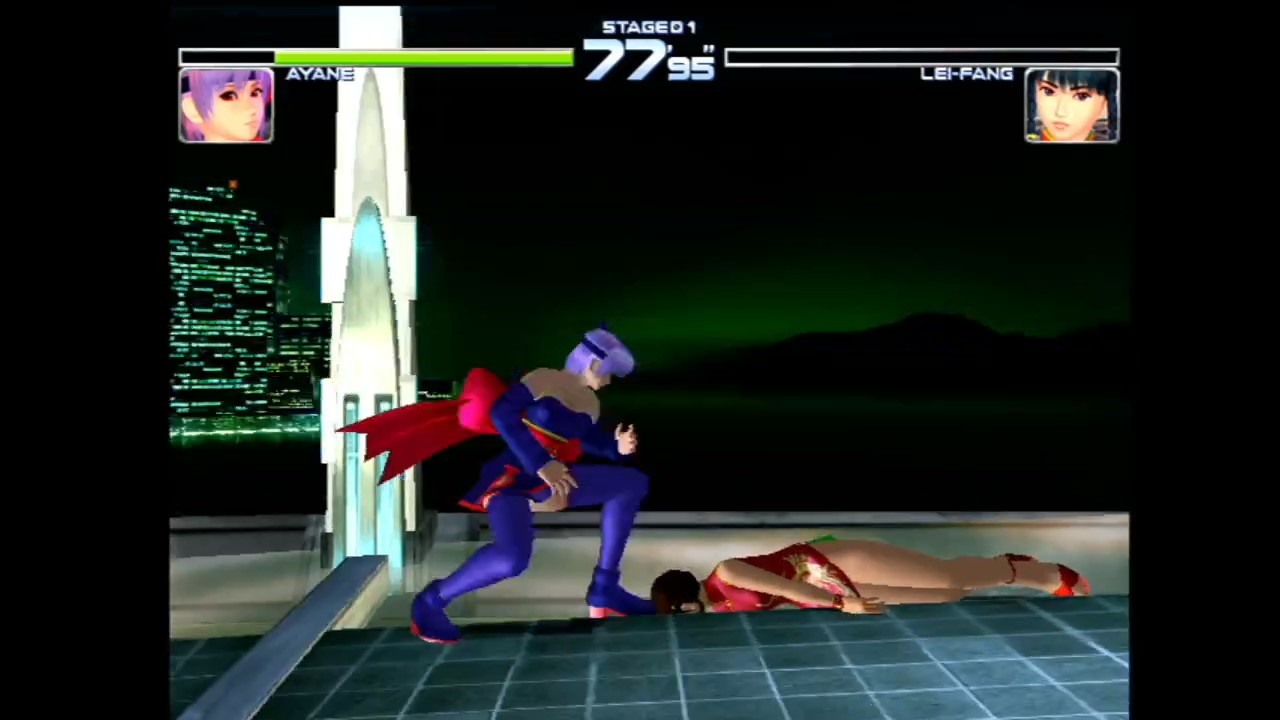The failed heir: The Hyper Neo Geo 64!
In 1982, Commodore International introduced the technology world to the concept of 64. But it was a very intimidating; following Commodore’s 1994 collapse, 64 remained elusive until Nintendo made it Ultra in 1996. But what if someone could take 64 and make it Hyper? Obviously, something that much bigger, badder, and better could only come from SNK– and in 1997, it did. So what was the Hyper Neo Geo 64? And why didn’t it stick? The year of the arcade continues!
The Hyper Neo Geo 64

The Hyper Neo Geo 64 is one of the most imposing pieces of hardware I’ve seen. It’s quite simply, huge. Like the Atomiswave, it’s contained in a box to block out outside interference. Unlike the friendly red Atomiswave, though, this is solid unpainted metal. The cartridges are pretty big too, making even the AES cartridge look downright normal.
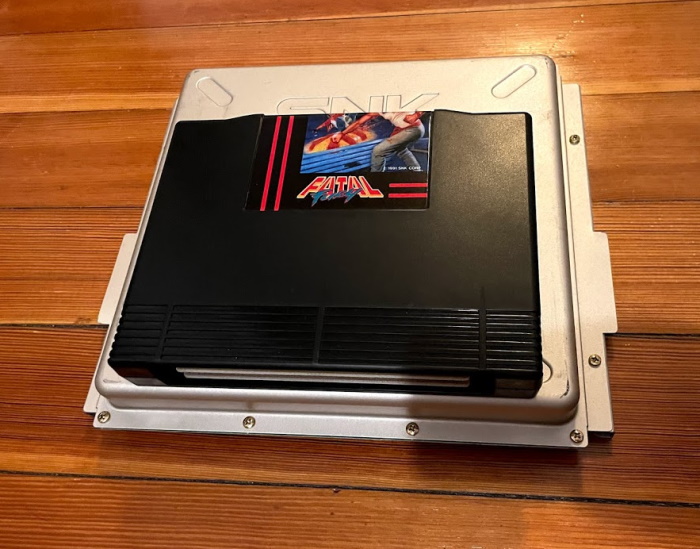
The first game released using the Hyper Neo Geo 64 hardware was Road’s Edge, in September of 1997. And this raises the first question about the Neo Geo 64 that came to mind to me: SNK released a 64-bit successor to the Neo Geo MVS, but kept making games for the 16-bit Neo Geo throughout? And we’re not talking some filler like how the Wii lingers today with the occasional Just Dance port; we’re talking serious heavy hitters, like King of Fighters ‘98 and Garou: Mark of the Wolves.
Architecture
Before we answer that question, let’s take a look at the architecture of the Hyper Neo Geo 64. Unlike the MVS, the system was never designed to support multiple games at once; one can only imagine the sort of ridiculous behemoth that would require. Since the boards are oriented differently, I can only assume that was never part of the plan.
The system’s CPU is a 100MHz NEC MIPS-based RISC design that is very similar to that used in the Nintendo 64 console; so this isn’t a “do the math” situation: the system really can do 64-bit calculations.
The system’s graphics, meanwhile, are made up entirely custom using a huge number of ASICs designed in-house by SNK. This can not have been a cheap board to manufacture; our first clue as to why the MVS lived alongside the Hyper Neo Geo 64. But just for fun, let’s look at SNK’s advertised specs, compared to the MVS. (Values will pretend bankswitching isn’t a thing, because you can really get ridiculous with that)
| Hyper Neo Geo 64 | Multi-Video System | |
|---|---|---|
| Main CPU | 64-bit 100MHz MIPS | 12Mhz Motorola 68000 |
| RAM | 4MB | 64 KB |
| Program Memory | 64MB | 1MB (max) |
| VERTEX Memory | 96MB (max.) | |
| Texture memory | 16MB (max.) | |
| Displayed sprites | 1,536/frame | 381/frame |
| Character memory | 128MB | 16MB (max) |
| Scrolling screens | 4 (max.) | 0, must use sprites |
| Scrolling memory | 64MB | 0, must use sprites |
| Colors | 16.7 million | 65,536 |
| Simultaneous | 4096 | 3840 |
| Sound channels | 32 | 11 |
| Sampling freq. | 44.1kHz (max) | 18.5 kHz (ADPCM-A) 55.555 kHz (max, ADPCM-B) |
| Sample memory | 32MB | 2MB |
| Resolution | 480i | 240p |
Very nice, as you’d expect! The only place the 7-year-old MVS wins is the theoretical maximum frequency of ADPCM-B samples, however, in practice I don’t think anyone ever went that high in any commercially-released games, as it’d just be wasteful with the ROM space.
But there’s another little secret hiding inside the system’s design: the IO board.

Diagram from the Arcade Flyer Archive, a 1997 flyer promoting the new system.
The IO board sits at the bottom of the metal box. It’s actually the IO board where the all-important JAMMA connector is, along with some others. On the IO board shown here (a first-generation fighting board), stereo audio is provided through the lower connectors, and isn’t provided on the JAMMA connector. The second-generation one changed this, so it’s a bit more desirable. As a result, I don’t have it.
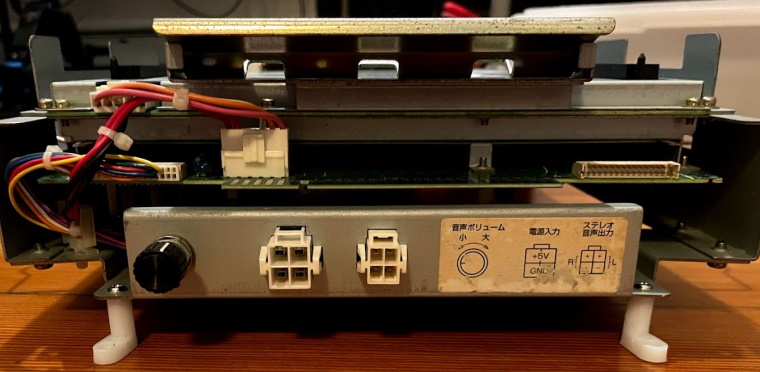
Flip it over, and we see the LVS-IOJ board, confirming that this is a first-generation fighting IO board. These IO boards provided additional connectors, and you must make sure to pair the correct IO board with the game you have, or the game won’t boot. For an arcade system with seven games, this sure is complicated!

There are the following IO boards:
- First-generation Fighting: LVS-IOJ with external audio connectors. Can play Fatal Fury: Wild Ambition, Buriki One, and the two Samurai Showdown games
- Driving: LVS-IOJ, but with different auxiliary connectors. Can play Road’s Edge, Xtreme Rally, and interestingly, the two Samurai Shodown games
- Second-generation Fighting: LVS-JAM. Can provide audio over the JAMMA connector, and plays all the same games as the first-generation Fighting board.
- Shooting: LVS-IGX. Only confirmed to be able to play Beast Busters: 2nd Nightmare, and does not use a JAMMA connector at all but rather a custom board that guns and video plug into.
- Korean: Presumably LVS-IOJ. Only confirmed to play the Samurai Shodown games.
You might notice that the driving board and the first-generation fighting board are, in fact, the same PCB, just with different peripherals plugged in. In fact, the identity of the board is stored in a serial EEPROM on the board, and that internal program can be swapped out to trick a game into thinking it’s running on a different board.
I’m not sure, but I get the impression it’s the game itself that performs the check. This would explain the wide compatibility of the Samurai Shodown games; perhaps they simply don’t check. (The LVS-IGX board doesn’t even have JAMMA, so it can be excluded) It may be possible then to create some sort of Hyper Neo Geo 64 “Unibios” that enables cross-IO board playing, but don’t expect to see one ever. I doubt anyone is interested.
Why?
This IO board situation is pretty complicated for someone looking to play on arcade PCBs at home, or shopping eBay auctions for unmarked boards. But at the time, it really wasn’t that big of a deal. The “Fighting” boards would be the only ones that you could really use in a traditional upright or Candy cab anyway; driving and shooting games required special hardware.

These specialized arcade machines were big business in the latter half of the 90’s thanks to games like Daytona USA, Crusin’ USA, and Area 51 (Area 51, of course, being in the USA). They were also unachievable on the aging MVS hardware; even if there was a decent racing game on the system (sorry, Riding Hero), the 3D games had made sprite-based racers look obsolete overnight. Plus, nobody wants to play a racer with a joystick, so you’d need special hardware anyway. (Yes I know The Irritating Maze exists)
I think it’s pretty telling Road’s Edge was the launch title for the HNG64. The hardware let them enter a popular genre that they simply couldn’t do– as for the fighting games, the MVS was still more than good enough to put on a good show, even if 2D sprite-based fighters weren’t as popular as they were in the first half of the 90’s.
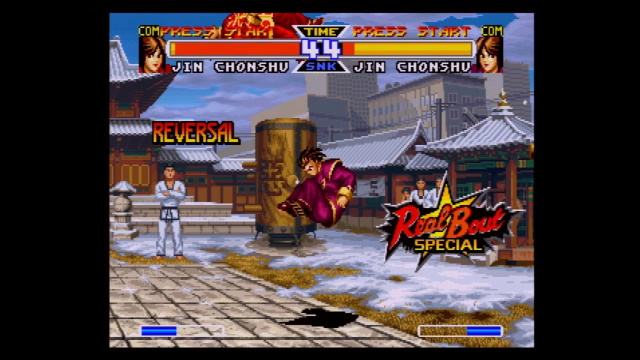
Using the Hyper Neo Geo 64
The system has a reputation of being a bit of a tempermental beast, so I was a bit worried. But I had no issues at all! The beefy picoPSU was perfectly up to the task, and the Retroelectronik Essential supergun is wired perfectly.
The one big issue I’ve head with this system and superguns is that many don’t attach all the 5V, 12V, and GND pins on the JAMMA edge connector, assuming that they’ll all be connected on the board anyway. The Hyper Neo Geo 64, which has high power requirements, doesn’t bridge them all for whatever reason, so you need to power all of them.
The audio was a bit annoying; the connector on the front is apparently a standard JST connector, but I ordered the wrong connector several times, so I ended up just poking bare crimped connections into the ports. Not pretty, and be very careful to avoid shorts, but it worked. Like JAMMA, this is an amplified audio signal, and you’ll need a “high-to-low” converter. These are basically big resistors.
And with all that… it boots!
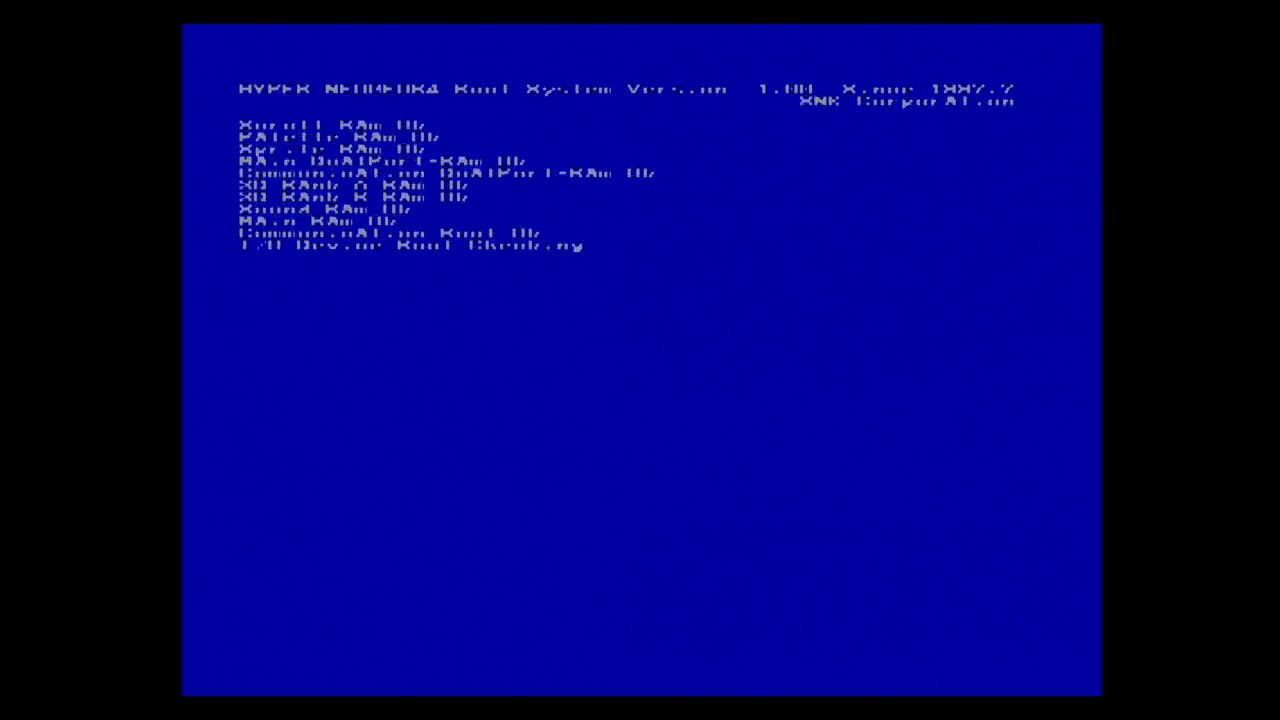
Yeesh, that is some awful interlacing. This is using the Framemeister, which uses a “bob” deinterlacing technique; this displays only one field each frame, so things shake a bit– it’s very obvious on this system for whatever reason. If you have an arcade monitor or other RGB CRT (I don’t), it’s time to break it out.
We can improve it a little bit by layering two frames on top of each other with half opacity. I’ll do that here, but for the most part I won’t, because this effect is really visible when you play it so like it or not, that terrible interlacing is part of the experience.

In any case, this is just a self-test. You can see it mentioning a communication port; this was for Road’s Edge and other driving games so that you could have multiple players each with their own side in the same race, a popular feature. Each player would need their own cabinet, and SNK were happy to sell you two. But for the game we’re playing, we don’t need it.
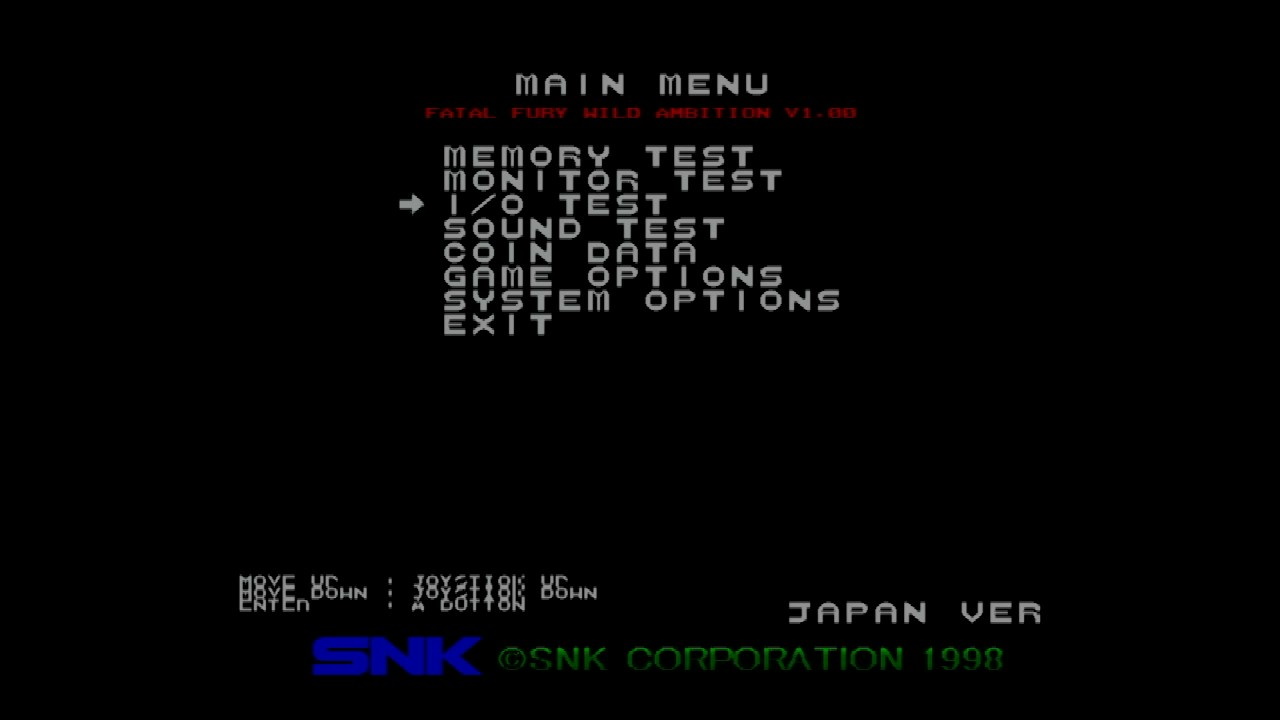
There’s also a service menu, if that’s your thing. You can change game options and test the video here. Pretty standard for arcade machines, and this is pretty similar to the MVS one, though higher resolution.
What game are we playing?
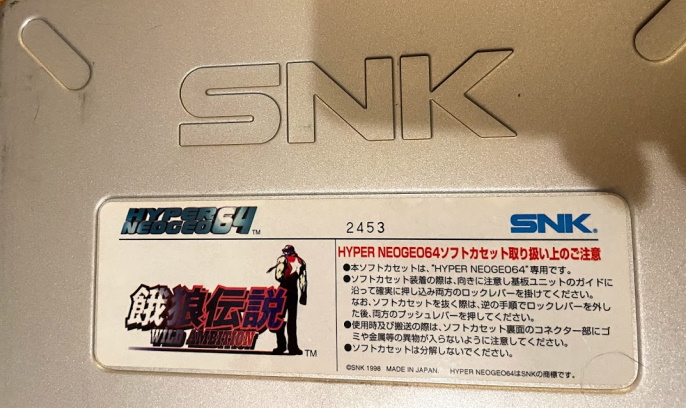
If you didn’t see in the service menu (I don’t blame you with that interlaced font), we’re playing Garou Densetsu: Wild Ambition. This is a 1999 title, so one of the last for the system, and if you don’t recognize the name Garou Densetsu (“Legend of the Hungry Wolf”), you might know it better by its Western release name, Fatal Fury. Arguably, Fatal Fury was SNK’s flagship 1-on-1 fighter in this time, and this is the only 3D entry into the series.
Interestingly, Fatal Fury has had “3D” gameplay elements since the first game in the series. In that game, fighting takes place on two planes, and characters can jump between them. In the first game, for whatever reason there is no way to do this as a player in a single-player fight, only the computer can do it. In most later entries, this multi-plane fighting was retained in some way or another, and was always made controllable by the player.
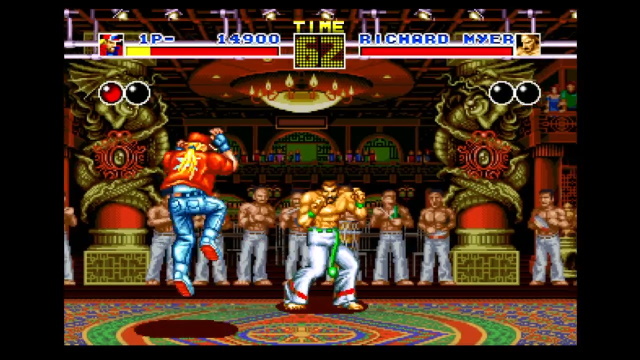
The other reason I bring up the original is that in theory, Fatal Fury: Wild Ambition is a remake of the original Fatal Fury, sharing its place in the timeline. In practice, the two share almost nothing in common. The iconic opening of Fatal Fury, in which Terry Bogard watches the name of the game scroll by, is replaced by an opening explaining Terry’s backstory and showing a young Terry devastated by the murder of his father, interspersed by a sequence of Geese Howard getting out of a helicopter. Quite a tone shift!
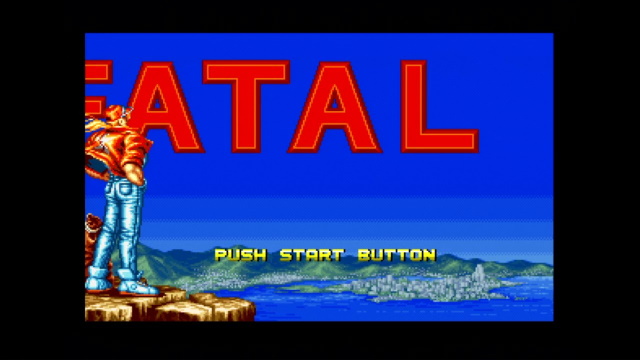
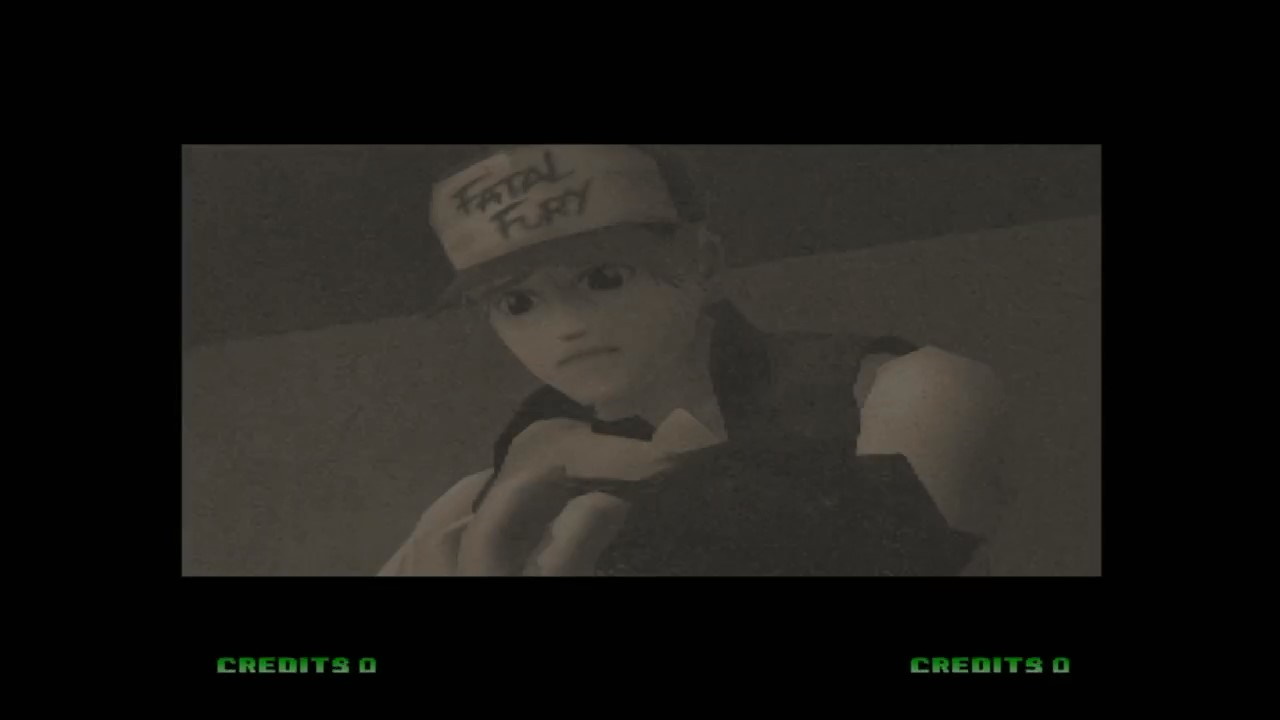
In game things have changed too, in this case clearly for the better. Fatal Fury, whose development started before Street Fighter 2 showed the world that large casts are needed in fighting games, has only three playable characters: Terry and Andy Bogard, and their friend Joe “I’m here too!” Higashi. Wild Ambition ups this to ten. Additionally, these are the characters you fight throughout the game; in Fatal Fury you never fought the other playable characters in a single-player campaign.
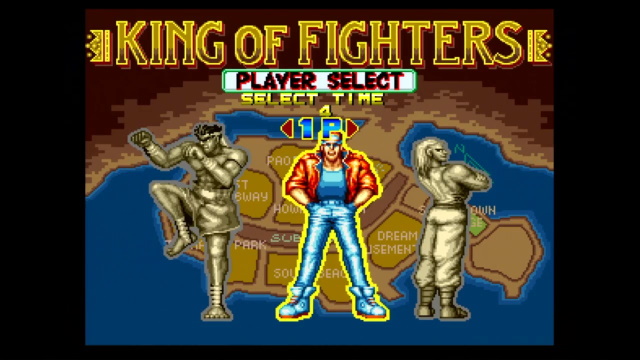
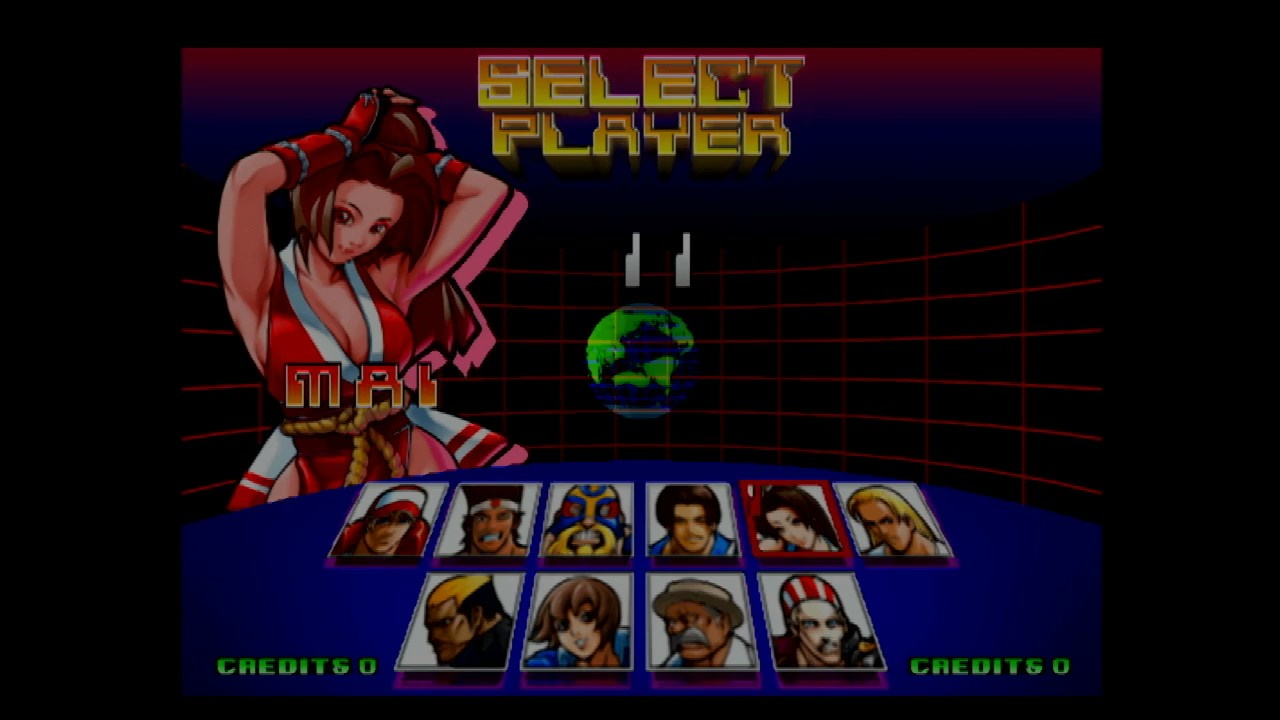
While some characters, like Billy Kane and Raiden, were in the original Fatal Fury, much of the cast is taken from later games in the Fatal Fury series. There are two entirely new characters, Tsugumi and Toji. Tsugumi is quite fun, she has a “high school wrestling” fighting style.
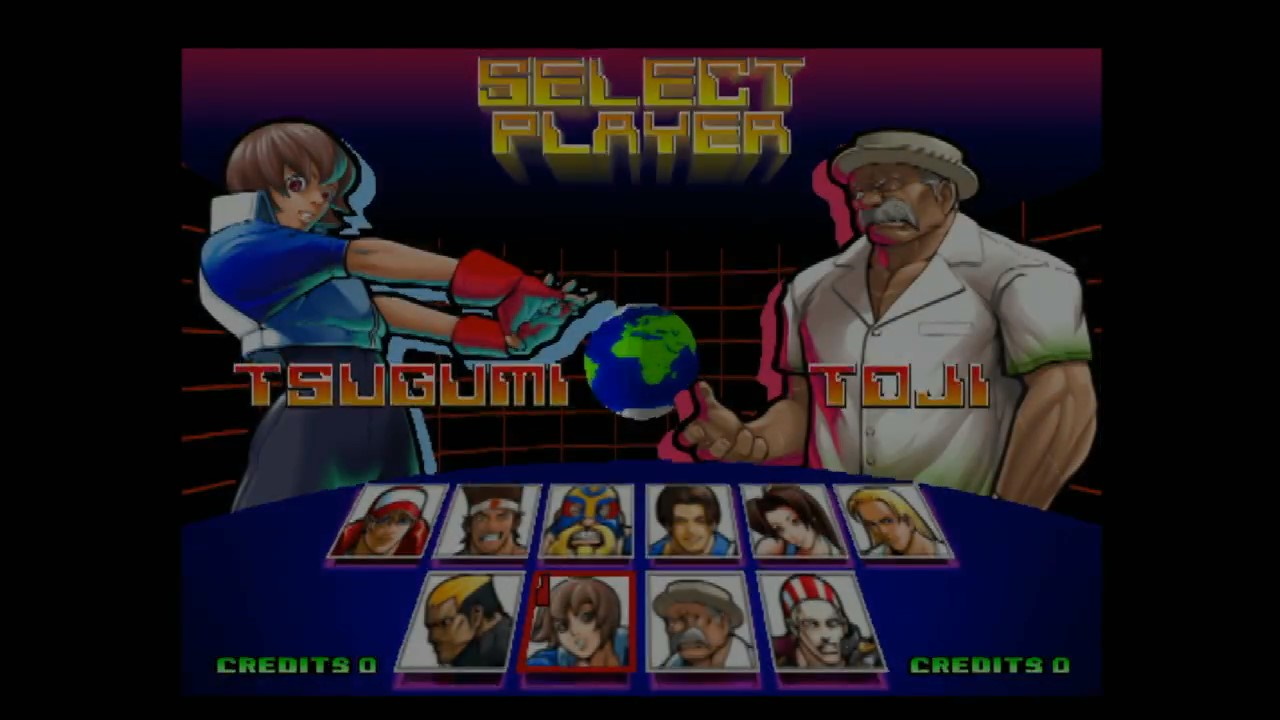
There’s also Li Xiangfei, who is secret. Fatal Fury had no secret characters.
Gameplay
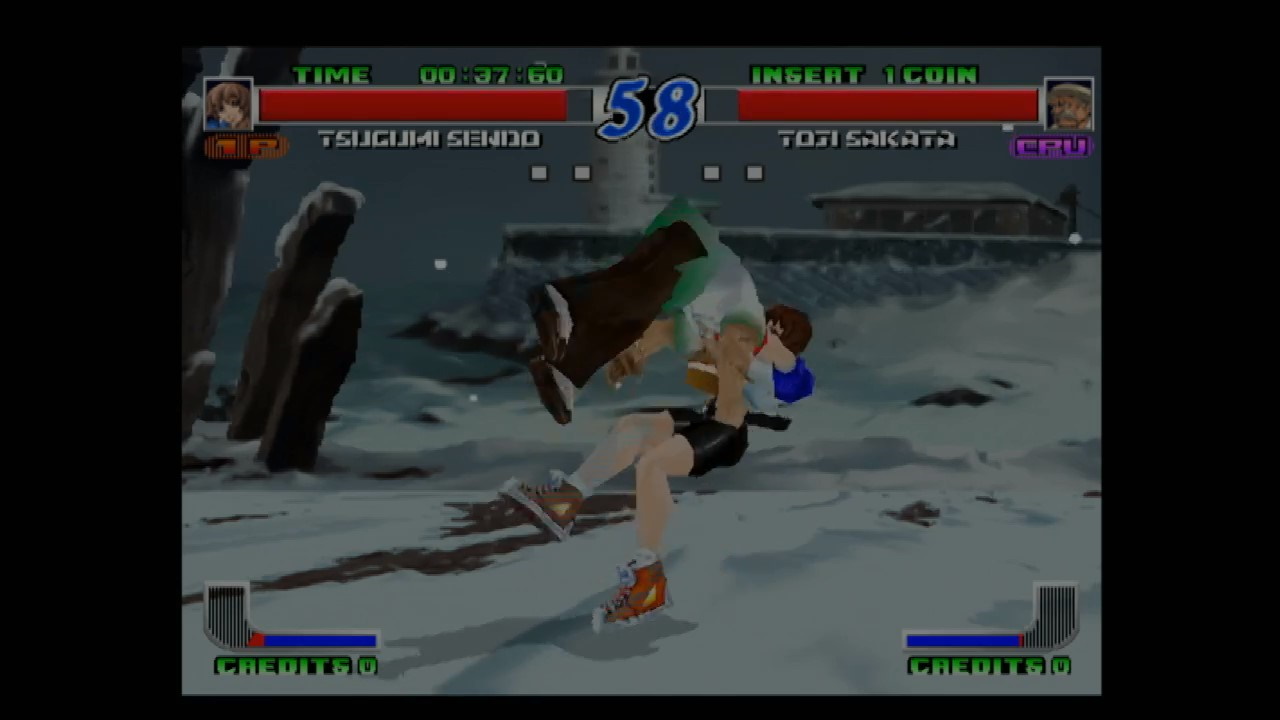
In terms of control scheme, Fatal Fury: Wild Ambition uses the same 4-button scheme as the Real Bout: Fatal Fury series; this is a definite improvement over the 3-button control scheme from Fatal Fury. And yes, the Hyper Neo Geo 64 uses the same 4-button control scheme as the MVS; in fact, it has one fewer button, since there’s no need for select.
- A Punch
- B Kick
- C Strong attack, also used for throw
- D Move in the third dimension
The D button move is where this gets interesting. While in the Real Bout Fatal Fury games this would move you to another plane, in this it does a 3d dodge move that changes the 2d plane you’re fighting in to allow you to dodge an attack. In terms of appearance, this makes the fights look more like Virtua Fighter as you move at different angles on the 3d plane.
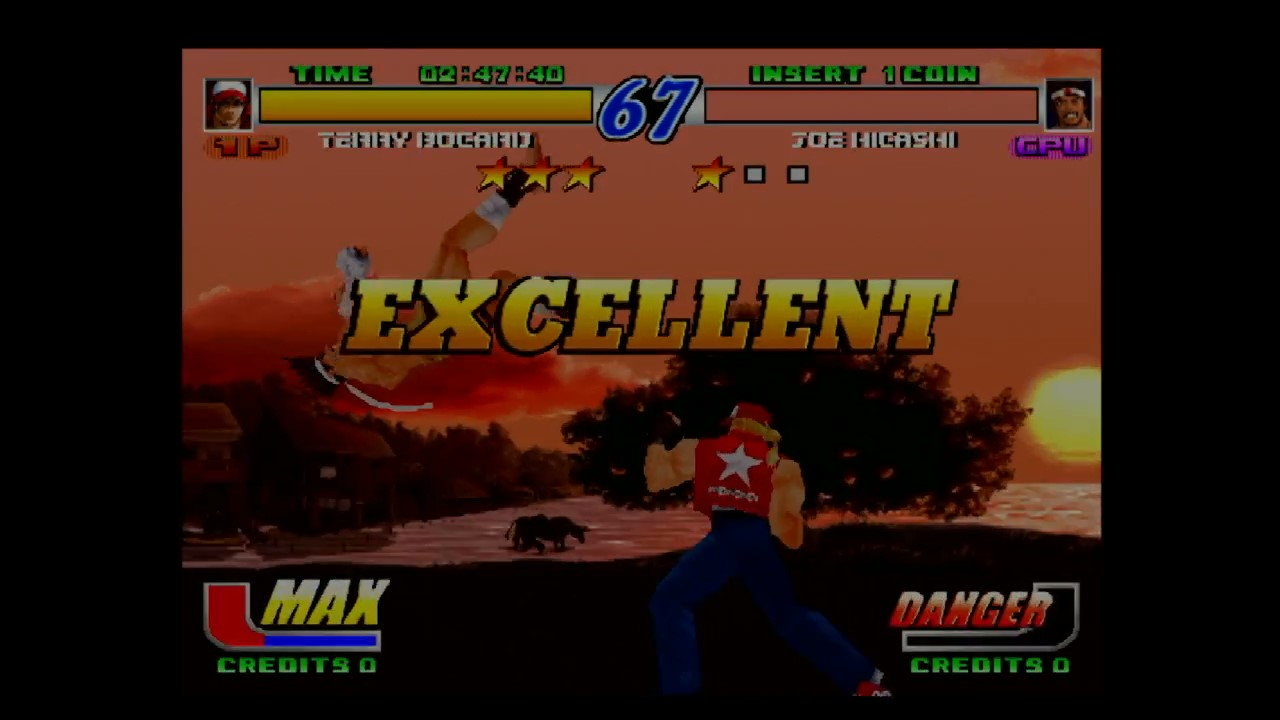
However, since this dodge move doesn’t move you to an entirely new plane, but just changes the plane you’re fighting on, it definitely changes the feel of the game. Unlike, say, Real Bout Fatal Fury Special where you fight on two planes and can get a breather, the dodge in Fatal Fury: Wild Ambition only gives you an immediate break, more like a roll in King of Fighters.
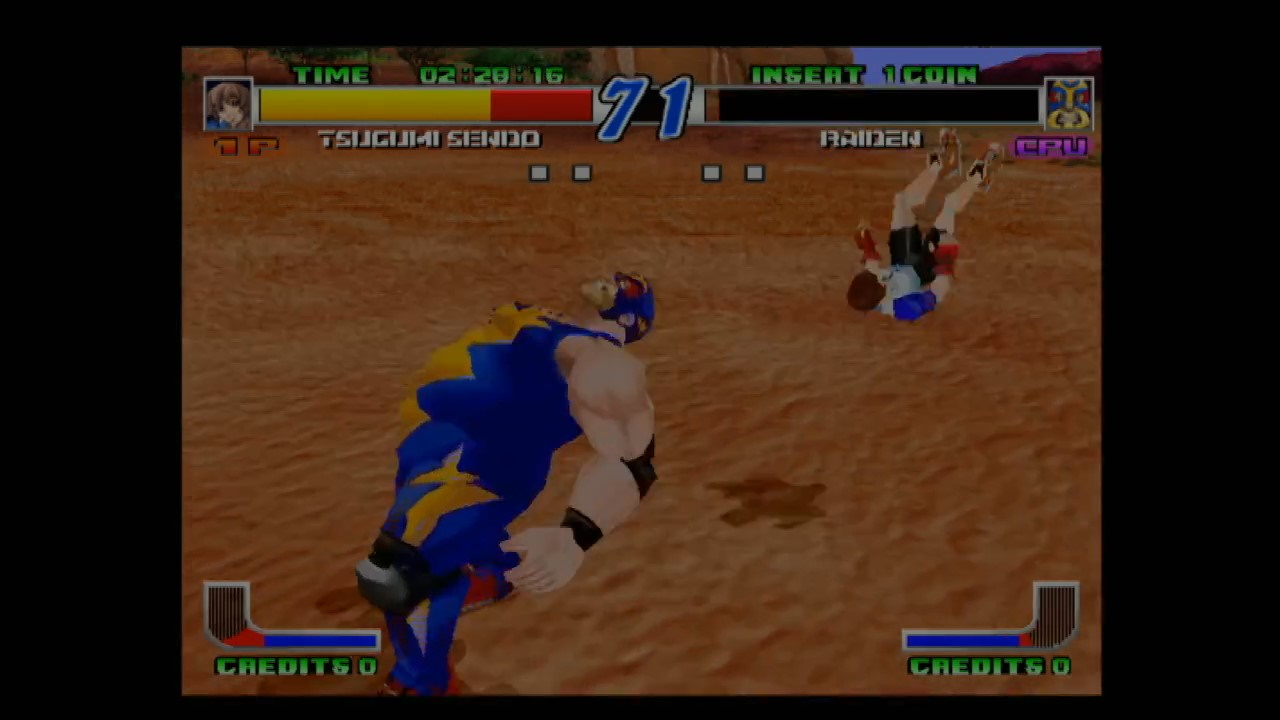
Unfortunately, one thing Wild Ambition shares with the original Fatal Fury is a slower gameplay; matches can drag. Unlike past games in the series, the default behavior of a round is only one match; when played like this the game does go faster, but in a two-out-of-three or three-out-of-five configuration like these screenshots, it’s definitely possible to lose interest. Remember, arcade machines don’t have pause buttons!
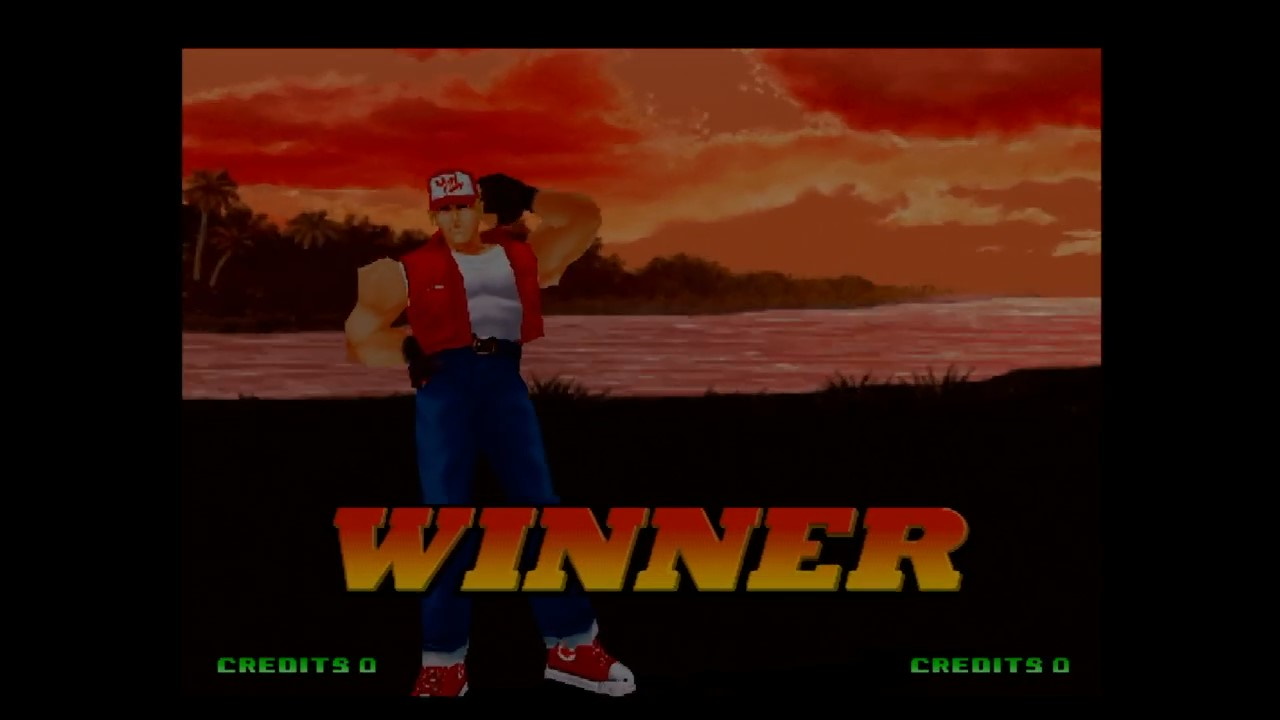
Meanwhile, the victory screen rushes through to jump to the next fight without any inter-fight dialogue. That’s a shame, because this was a big part of the original Fatal Fury and really helped build Geese Howard into the legendary villain that he is.
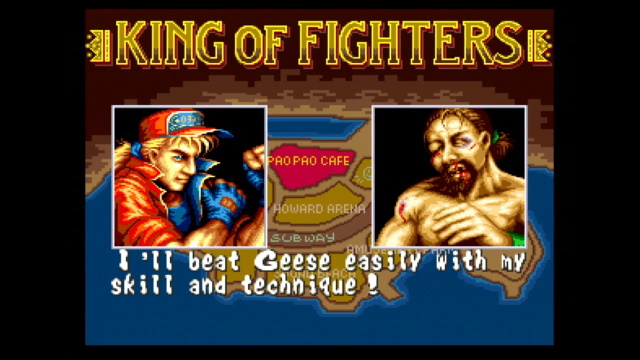

There are some cutscenes once you get further into the game, though.
The competition
So, Fatal Fury: Wild Ambition is, in my book, a fairly good-looking game. Unfortunately, some weaknesses of the hardware can be seen if you pay closer attention. For example, look at the lighting against Joe Higashi here.

This lighting effect, which does show off the power of Terry’s hits, also reveals the low-polygon nature of Joe as it overwhelms the texture. Unfortunately, the Hyper Neo Geo 64, despite being an expensive high-end arcade system, was late to market in a time when graphics technology was moving fast. For example, in 1998, Sega released the NAOMI system and the Dreamcast home console.
In 1999, Dead or Alive 2 was released for the NAOMI. This is the Dreamcast port from 2000, but even so, this is running in full 480p, with superior lighting and character models. It’s also faster-paced. (Even if we can forgive a bit of the muddiness of the SNK game’s graphics to the Supergun)
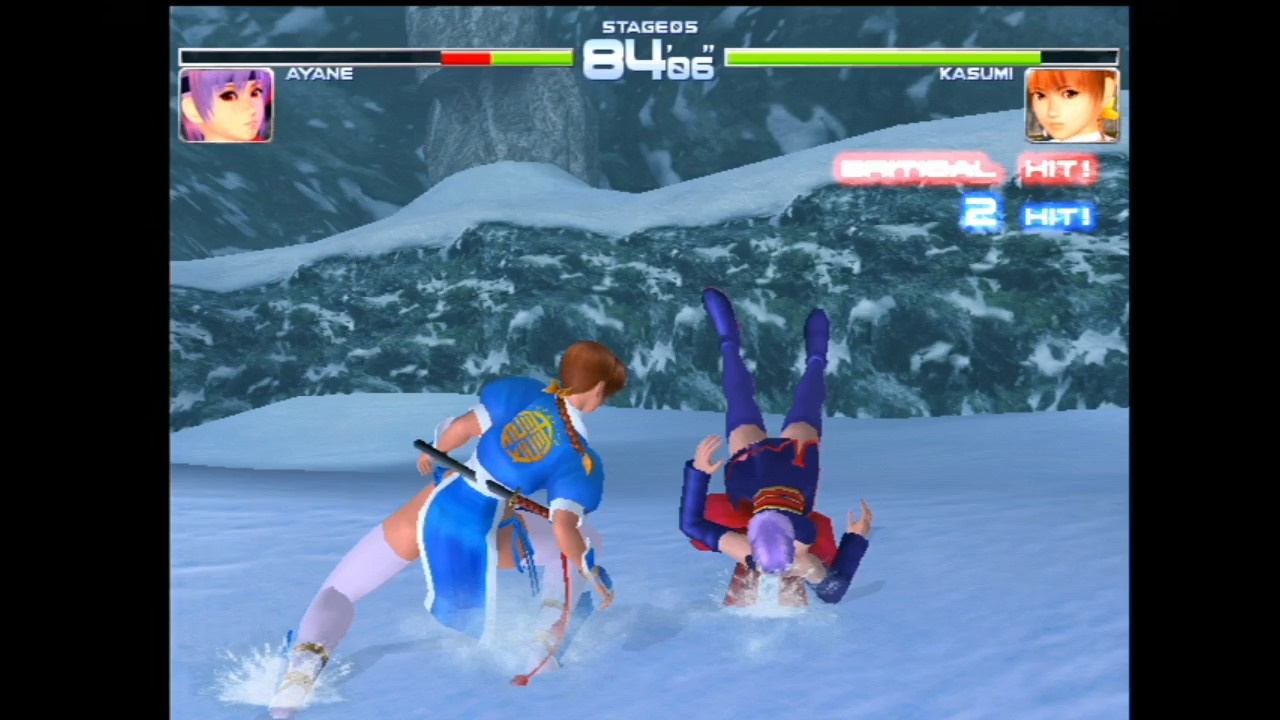

The NAOMI was substantially more successful than the Hyper Neo Geo 64; indeed, SNK (post-bankruptcy as SNK Playmore) would switch to a very similar architecture when they adopted the Atomiswave. Interestingly, though, they wouldn’t do any 3D fighters on that platform.
In Memoriam
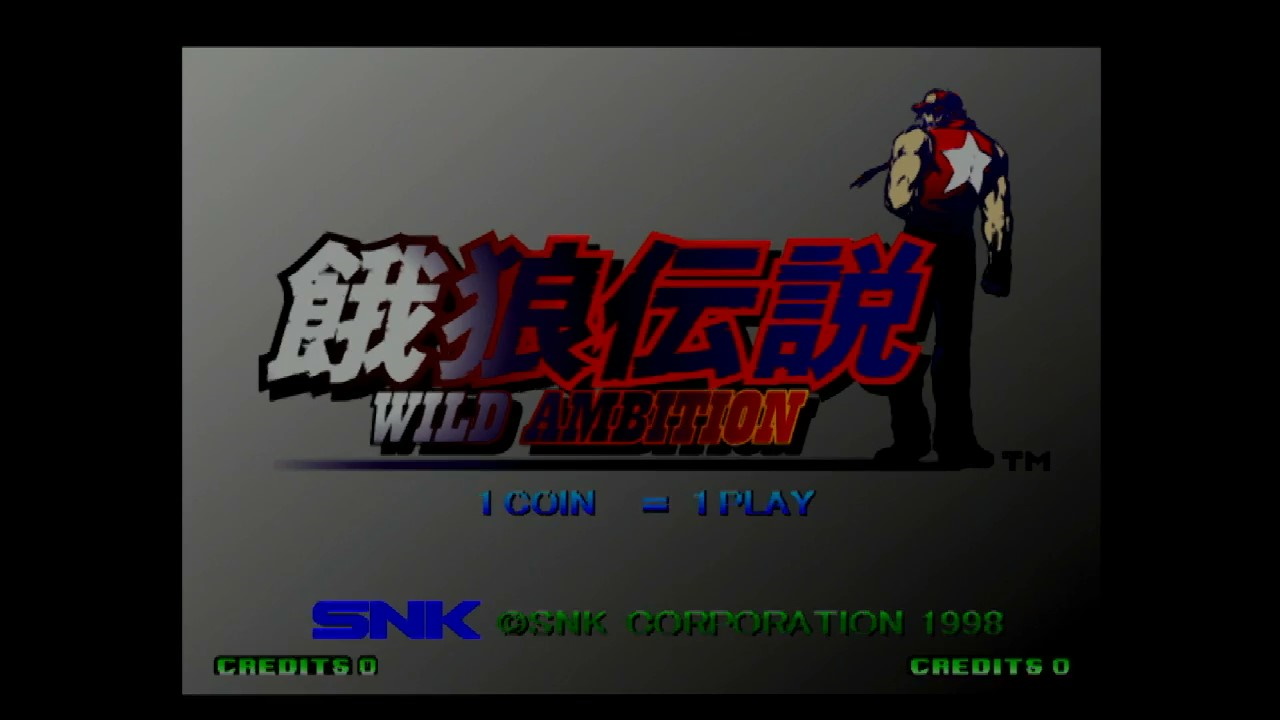
This probably sounded pretty harsh on the Hyper Neo Geo 64, and I want to say that I actually enjoyed messing with it. It really feels like a beast to use, and I have my eye out for a copy of Buriki One, which looks quite good from what I can see. In terms of “cool old technology” it is definitely on the list. And unlike the Atomiswave, it doesn’t have a horribly noisy fan.
But if we want to look at why it struggled on the market, well, we have to be harsh. Operators didn’t buy the Hyper Neo Geo 64 because it wasn’t impressive enough at the time for the cost. They kept buying the MVS because it was impressive enough for the cost, even though it was technically inferior. With poor arcade sales, any plans for a home version disappeared into the wind.
The last Hyper Neo Geo 64 game, Buriki One, came out in May of 1999, so it seems to have been wound down before SNK’s 2000 collapse under Aruze. It’s really a bit sad; in 2D times, even a tiny company like Alpha Denshi (who did much of the hardware design for the Neo Geo) could make a good chipset. In the 3D era, things rapidly consolidated, leading into the ATi/nVidia duopoly we all know today.
So that’s the Hyper Neo Geo 64. If you’re interested in learning more about the games on this platform, I recommend checking out the Video Game Esoterica YouTube channel. Not only does he have a complete set of games reviewed, he recently uncovered a prototype of Samurai Shodown 64, the only known Hyper Neo Geo 64 prototype.
